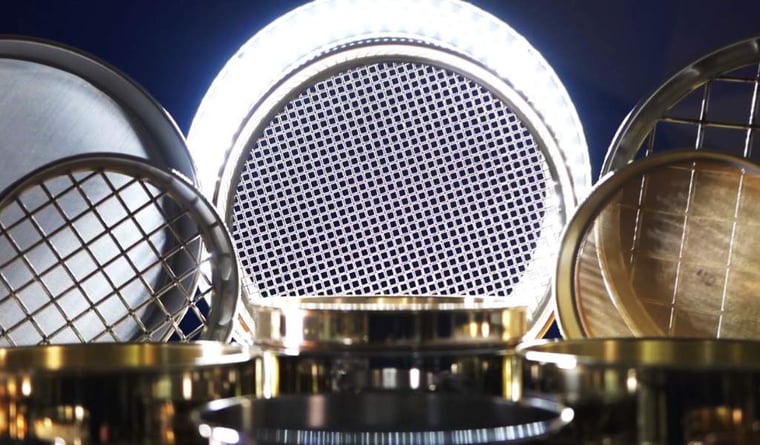How ISO 3310-1: 2001 Tolerances Affect Test Sieve Construction
Since their invention, test sieves have become synonymous with the particle size analysis industry. They allow lab technicians to accurately separate particles by size and provide insight into the quality of their production line.
But to provide reliable results, your test sieves must be highly accurate. This is why many standards, such as the ISO 3310: 2001 standard, have been put in place to establish tolerances to create a set bar of accuracy.
That said, what test sieve tolerance does the ISO 3310 establish?
W.S. Tyler has been a trusted voice in the particle size analysis industry for over 150 years of experience. We take pride in fabricating precise sieves that comply with ASTM e11 and ISO 3310 standards.
With that, the following article was written to illustrate how the ISO 3310-1 standard affects the fabrication of test sieves. It will cover:
- The definition of sieve cloth
- Why test sieve tolerances must be put in place
- The tolerances set by the ISO 3310 standard
- How test sieve quality is managed
What Is Sieve Cloth?
Sieve cloth is a laboratory-grade woven wire mesh fabricated under ASTM E11 and ISO 3310-1: 2001 guidelines. These standards work in conjunction to dictate the nominal aperture size and wire diameter to ensure a specific degree of accuracy.

Now, sieve cloth is typically used to fabricate test sieves. However, it can also be used to screen dry, free-flowing material on a large scale.
The Importance of Test Sieve Tolerances
Sieve cloth mesh is woven using identical techniques as industrial textile weaves. This means that blemishes that occur during the weaving process can ultimately affect the reliability of your test sieve analysis results.
For instance, if a particular aperture (pore opening) is smaller than intended, then odds are one of the apertures in the proximity is larger than intended. Because of this, tolerances have been put in place to standardize a specific level of statistical precision.
What Tolerances Does the ISO 3310-1: 2001 Standard Establish?
The ISO 3310-1: 2001 lays out guidelines about the number of apertures that must be measured as well as at what position of the sieve cloth. With that, the following aperture size tolerances are tested when using woven wire mesh sieve cloth:
+X
The +X tolerance states that apertures in either the warp (vertical) or weft (horizontal) direction are expected to be within a w + X tolerance. If the apertures exceed this tolerance band, the test sieve is rejected.
± Y
The ± Y tolerance requires the mean value of the apertures measured to be calculated. The mean value of the Apertures in the proximity, however, is not.
Instead, the mean value of a wide range of apertures spanning the diameter of the test sieve, both vertically and horizontally, is calculated.
Ơ0 Standard Deviation
The standard deviation is based on the measure results in their entirety. It is put in place to highlight the total number of apertures that must be measured to generate results that are statistically backed data.
What Quality Control Does the ISO 3310-1: 2001 Standard Put in Place?
The quality assurance measures reflected in the ISO 3310-1: 2001 standard is closely based on those reflected in the ISO 9044 standard. This means that test sieves manufactured under the ISO 3310-1: 2001 standard must be calibrated.
Inspection laboratories must use calibrated test sieves that fall within a threshold of 99.73% of the standard deviation multiplied by three.
Understand How the ASTM E11 Standard Aligns With the ISO 3310-1 Standard
Sieve cloth is a scientific woven wire mesh that features the highly accurate pore openings needed to yield reliable test sieve analysis results. The ISO 3310-1 standard establishes the amount of aperture at specific positions of the mesh that must be measured.
But when with test sieves, it is important to know that there are additional standards, such as the ASTM E11 standard, that are designed to standardize the instrument. Knowing how the two standards complement each other will help ensure the test sieves you use deliver the best performance possible.
Standing as a leading test sieve manufacturer, W.S. Tyler is here to help you refine your test sieve analysis process so you can build your confined in your ability to provide high-quality products.
To gain insight into what the ASTM E11 standard initials, review the following article:
About Ronnie Brown
Ronnie is the Content Writer for W.S. Tyler and has four years of experience as a professional writer. He strives to expand his knowledge on all things particle analysis and woven wire mesh to leverage his exceptional writing and graphic design skills, creating a one-of-a-kind experience for customers.




